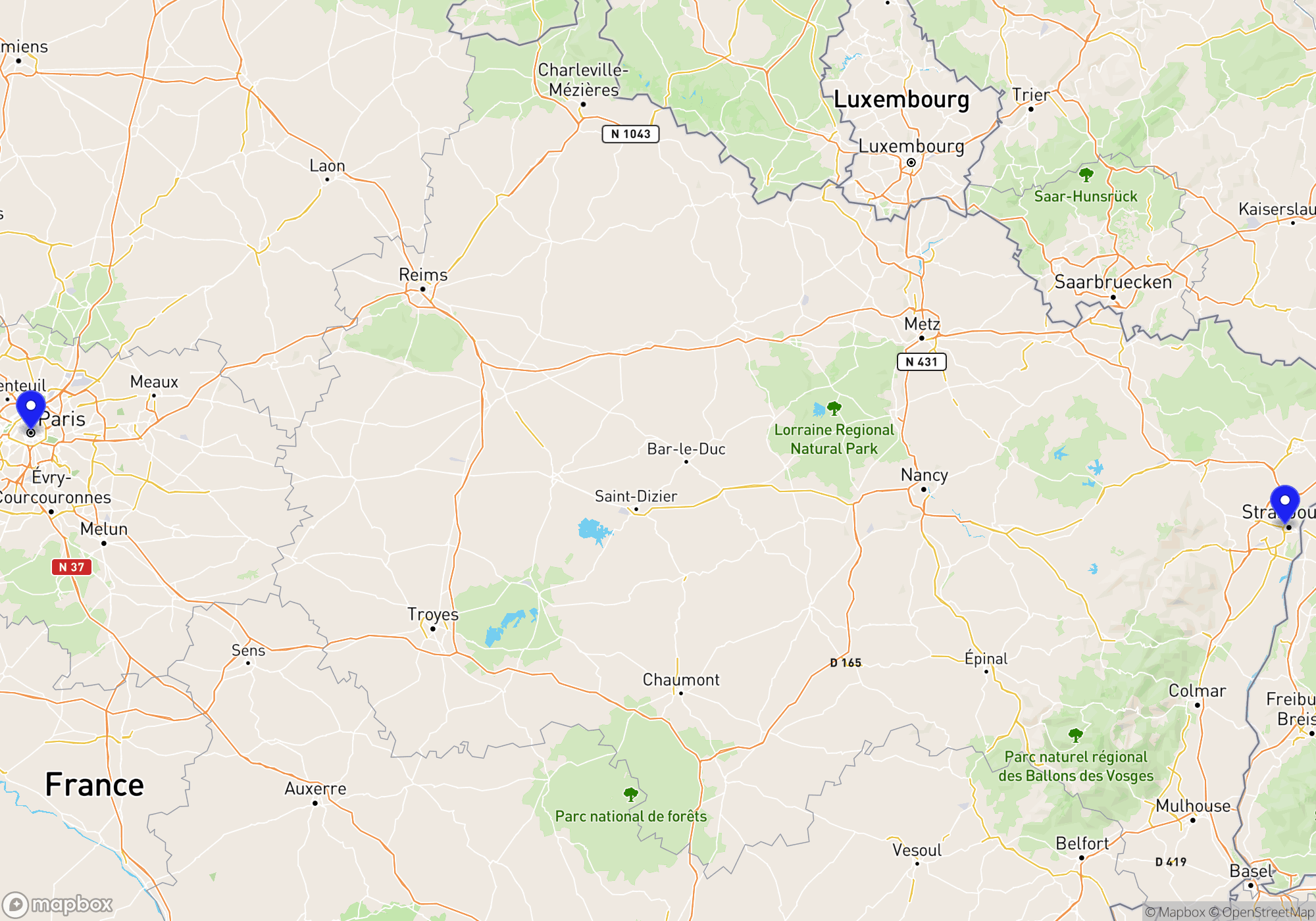
You can buy train tickets directly from the operator or through a reseller. The reseller is typically slightly more expensive (3-5%) but can provide an easier booking experience, especially if you travel with more than one operator.


These operators provide a complete journey either as a direct connection or through their partners. Even if a change of trains is involved, it’s all part of a single itinerary managed by the same train company or its partners, offering a smoother and more coordinated travel experience.



Some operators don’t run direct trains the whole way, but they serve either the departure or arrival station. In many cases, you can combine two of these operators to complete your journey by changing trains along the way. This is often a flexible and budget-friendly way to travel — especially if you’re comfortable piecing together your own itinerary.
Just keep in mind that these are separate journeys, which means a delay on the first leg could cause you to miss the second without automatic compensation or rebooking. It’s a great option for confident travelers who don’t mind a bit of extra planning.




Deutsche Bahn (DB) is Germany’s national railway company, connecting major cities across Europe, including routes from Paris to Strasbourg. DB offers various train types, such as the high-speed ICE trains known for their comfortable seating, ample legroom, and onboard amenities like Wi-Fi, power outlets, and dining services. Customer support is available both online and at the train stations, providing assistance in multiple languages.
SNCF is France’s national railway operator, known for its extensive network and high-speed TGV trains. These trains are equipped with comfortable seating, free Wi-Fi on certain routes, power outlets, and food services, including bar cars. SNCF provides excellent customer support through their website, mobile app, and at railway stations, with multilingual staff available to assist travelers.
Ouigo is a low-cost subsidiary of SNCF, offering budget travel options between major cities in France, including the Paris to Strasbourg route. Ouigo trains prioritize affordability and efficiency, featuring high-speed travel with basic amenities like simple seating and limited services. Food services are not typically available onboard; travelers are encouraged to bring their own snacks. Customer support for Ouigo is primarily online, with a focus on self-service options, and station staff available for assistance.
Each of these operators provides varied options to cater to different travel budgets and preferences. They offer a range of train types and onboard amenities, as well as customer service options, making the journey from Paris to Strasbourg comfortable and convenient for all travelers.
The Interrail Global Pass and Interrail One Country Pass are valid for traveling by train from Paris to Strasbourg if the traveler is not a resident of France. Residents of France cannot use these passes for domestic rail travel within France. The Eurail Pass can be used by non-EU residents to travel from Paris to Strasbourg by train. If the traveler meets the respective eligibility criteria, these rail passes can be used for the journey.
Upon arriving in Strasbourg by train at the Gare de Strasbourg, you have several options for local transportation to explore the city. Strasbourg has an effective and extensive tram network, which is one of the best ways to get around. The tram system consists of six lines (A, B, C, D, E, and F) that connect various parts of the city, including popular destinations like the historic city center, European institutions, and other neighborhoods. The trams are frequent and user-friendly, making them a reliable choice for tourists and locals alike.
In addition to trams, the city also offers a comprehensive bus network that serves areas not covered by tram lines. Both tram and bus services are operated by Compagnie des Transports Strasbourgeois (CTS), and tickets are often interchangeable between trams and buses, with options such as single tickets or 24-hour passes available for purchase at tram stops, train stations, or via the CTS mobile app.
While Strasbourg does not have a metro system, the existing tram and bus services provide excellent coverage of the city. For more personalized transportation, taxis are available throughout Strasbourg, including taxi ranks at the train station and prominent locations across the city. You can also use ride-sharing services like Uber or local companies, which are convenient for point-to-point travel, especially late at night or to destinations that might be less accessible by public transport.
For those looking to explore at a leisurely pace, Strasbourg is a bike-friendly city with plenty of cycling paths. The city offers a bike-sharing service called Vélhop, which allows you to rent bicycles for short-term use, either from staffed stations or automated rental points.
With these options, getting around Strasbourg is straightforward and convenient, allowing you to enjoy everything this charming city has to offer.
Strasbourg, located in northeastern France, is a prominent hub in the European rail network, offering a variety of domestic and international rail connections. Domestically, travelers can take direct TGV services from Strasbourg to Paris, a journey that takes about 1 hour and 45 minutes, providing a fast and convenient link to the French capital. Another popular domestic route is to Lyon, with trains operating regularly and taking approximately 3 hours. Additionally, Strasbourg maintains connections to southern cities like Marseille, with direct trains running several times a day.
Internationally, Strasbourg is well-connected to Germany due to its proximity to the border. There are frequent regional TER and high-speed ICE trains to Karlsruhe, which take about 40 minutes, and to Stuttgart, which typically takes around 1 hour and 30 minutes. For travel to Switzerland, direct trains run to Basel with travel times ranging from 1 hour and 15 minutes to 1 hour and 30 minutes, making it easy to access Swiss destinations. Belgium is accessible via train services running to Brussels, usually with a transfer in Paris or Lyon, covering the journey in roughly 4 to 5 hours. These connections make Strasbourg an ideal starting point for train travel across Europe.
The best time to visit Strasbourg is generally from May to October. During these months, the weather is typically pleasant, with mild to warm temperatures that are ideal for exploring the city’s charming architecture and lush parks. Spring and early summer, in particular, offer blooming flowers and vibrant greenery. Prices for accommodation and travel tend to be more moderate in the shoulder months of May, June, and September compared to the peak summer holiday season in July and August when tourist crowds are at their highest.
Fall is another attractive period, especially in September and October, as the weather remains conducive for outdoor activities, and the city hosts various cultural events, wine festivals, and the European Heritage Days, which provide unique insights into the region’s rich history and traditions.
For those interested in winter charm and holiday festivities, December is an excellent time to visit, as Strasbourg is famous for its Christkindelsmärik, one of the oldest and most enchanting Christmas markets in Europe, set against the backdrop of the city’s historic center. However, travelers should be prepared for colder weather and potentially higher prices, especially for accommodation close to the market. Arriving by train offers convenient access to the city center, making travel easy regardless of the season.
When traveling from Paris to Strasbourg by train, it’s essential to pack items that will ensure comfort during the journey and usefulness upon arrival. Bring a valid ID or passport as it’s legally required for identification. Pack your train ticket, whether it’s printed or accessible on a digital device. Carry a comfortable travel pillow and a light blanket or wrap, as these can enhance your comfort during the trip. Keep a water bottle and some snacks handy for hydration and to manage hunger. A book or an e-reader can provide entertainment during the ride. Since both Paris and Strasbourg use Type C or E electricity plugs with 230V and 50Hz, if your devices use different plugs, bring a power adapter suitable for European sockets and possibly a power bank for phone charging. Don’t forget a small toiletry bag with essentials like tissues, hand sanitizer, and any personal medications. A city map or a smartphone with a navigation app will be beneficial for getting around Strasbourg. Lastly, bring appropriate clothing for the expected weather in Strasbourg and a reusable shopping bag for any purchases.